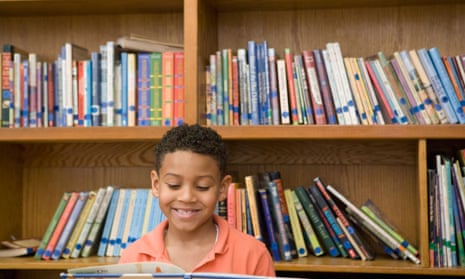There’s no better feeling than seeing a child losing themselves in the world of a favourite fictional character.
The benefits of reading go far beyond literacy: an emerging body of research highlights the power of stories to help children handle their own and other people’s feelings.
A Cambridge University study by Maria Nikolajeva, professor of education, found that “reading fiction provides an excellent training for young people in developing and practising empathy and theory of mind, that is, understanding of how other people feel and think”.
Neuroscience backs this up. Researchers at Emory University in Atlanta, US, say that fiction tricks our brains into thinking we are part of the story. The empathy we feel for characters wires our brains to have the same sensitivity towards real people. Carnegie Mellon University studies discovered that when you get lost in a book your brain lives through the characters at a neurological level.
Empathy is increasingly being recognised as a core life skill, and the bedrock for sound relationships and classroom climate. Roman Krznaric, author of Empathy, a Handbook for Revolution, says: “There has been an extraordinary shift … a concept that has been buried in psychology textbooks for nearly a century – empathy – is coming to be seen as one of the fundamental forces for tackling global challenges.”
EmpathyLab is a small start-up that is exploring ways to use stories to boost empathy among students. Here are some approaches teachers could try:
Pick the right books
The first thing is to find the right story. One approach is to find texts exploring familiar life scenarios to help children understand what their peers might be experiencing. At primary and secondary level there’s a text for just about every situation. For instance Kes Gray’s Mum and Dad Glue helps children empathise with friends’ pain when parents separate and Phil Earle’s Being Billy gives older readers a profound insight into how it feels to live in a young people’s care home.
In general, look for texts with well-rounded, believable characters. Even if they are doing terrible things, the story should help children understand a character’s motivations. Feelings should be dealt with subtly and not over-described.
If it’s hard to find the best books, search out a librarian. Their deep knowledge is currently on show through the Carnegie Medal, which emphasises the importance of strong characterisation.
Children are also fantastic at recommending books, especially on crunch issues. For instance, certain “being different” books, like David Walliams’ The Boy in a Dress, come up repeatedly.
Book groups help children explore new texts and learn how differently other people experience life. You could consider joining a free network, such as Chatterbooks. Writer Roman Krznaric’s Empathy Library, which has hundreds of empathy-boosting books and films for children and adults, is a useful resource.
Teach vocabulary for feelings
If children lack the language to share feelings, it’s hard for them to understand each other and communicate effectively.
Story-based questioning and discussion works well to build a language for emotions, especially when the teacher and student work together to explore what caused a character to act or feel as they did, and the consequences of their actions and emotions. Take Goldilocks and the Three Bears. You could ask: “Was Goldilocks really just a burglar or was she homeless or hungry?” This could be followed with diary writing or telephone interviews where Goldilocks explains herself to the bears.
Any teacher will attest to the power of meeting a real author. Bringing one into school with a brief to deliberately emphasise feelings can help children learn new emotional vocabulary. We wrote a blog about Sue Hendra’s session on her book Norman the Slug. Children loved Hendra’s hilarious naming of her feelings when she started writing but found aliens eating her pencils. She helped children learn new words to name Norman’s emotions and share them on a huge “feelings wall”.
Step into a character’s shoes
Getting children deeply engaged with characters is a good way to teach empathy.
Writers like Jacqueline Wilson and Cathy Cassidy spring to mind because of their skill in creating characters with strong, unique voices. But look out too for award winners such as Patrick Ness and Neil Gaiman whose inventive language and robust character development captivates readers. Ivan Brett, year six teacher at Brent’s Preston Park primary school, uses Bod from Gaiman’s Graveyard Book “because he’s a normal boy in a very abnormal situation and it stretches pupils’ imaginations to step into his shoes”.
Hotseating works well when exploring topics like bullying or prejudice. Start by absorbing related stories or playscripts. Ask children to create a character quite unlike them – the bully or the bullied – then get them in a hotseat for an interview where they really have to be that person. Getting into character like this makes things much more real – in a creative writing class, helping children step into a character’s shoes will make their descriptions more lively and nuanced. In a spiritual, moral, social and cultural (SMSC) session, the same technique delivers on Ofsted’s requirement that children develop an interest in investigating moral issues and an understanding of others’ viewpoints.
Miranda McKearney and Sarah Mears both work for EmpathyLab. McKearney is chair and Mears library lead.
EmpathyLab would like to hear from schools interested in using reading, writing and story-making to build children’s emotional and social skills. Contact Miranda McKearney if you’re interested in taking part.

Comments (…)
Sign in or create your Guardian account to join the discussion